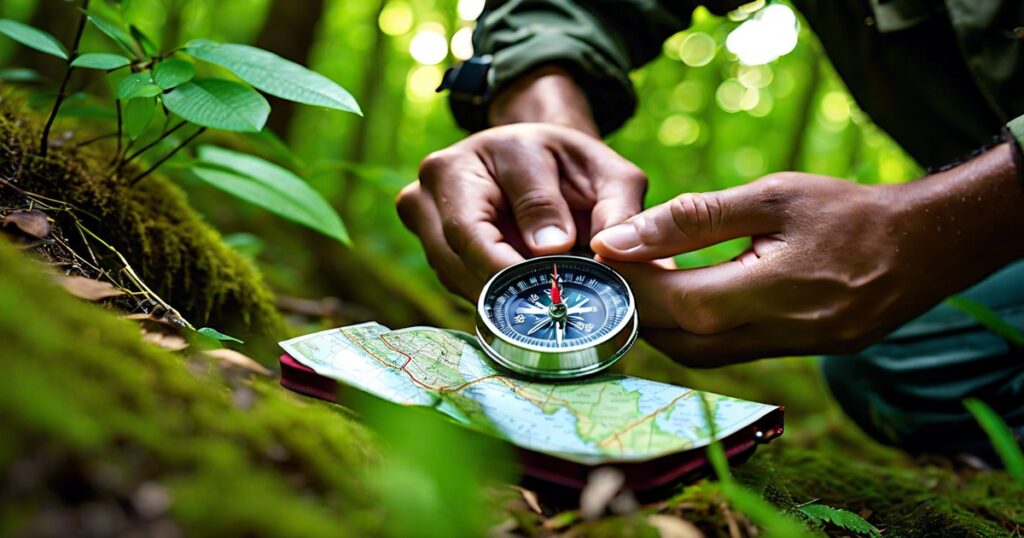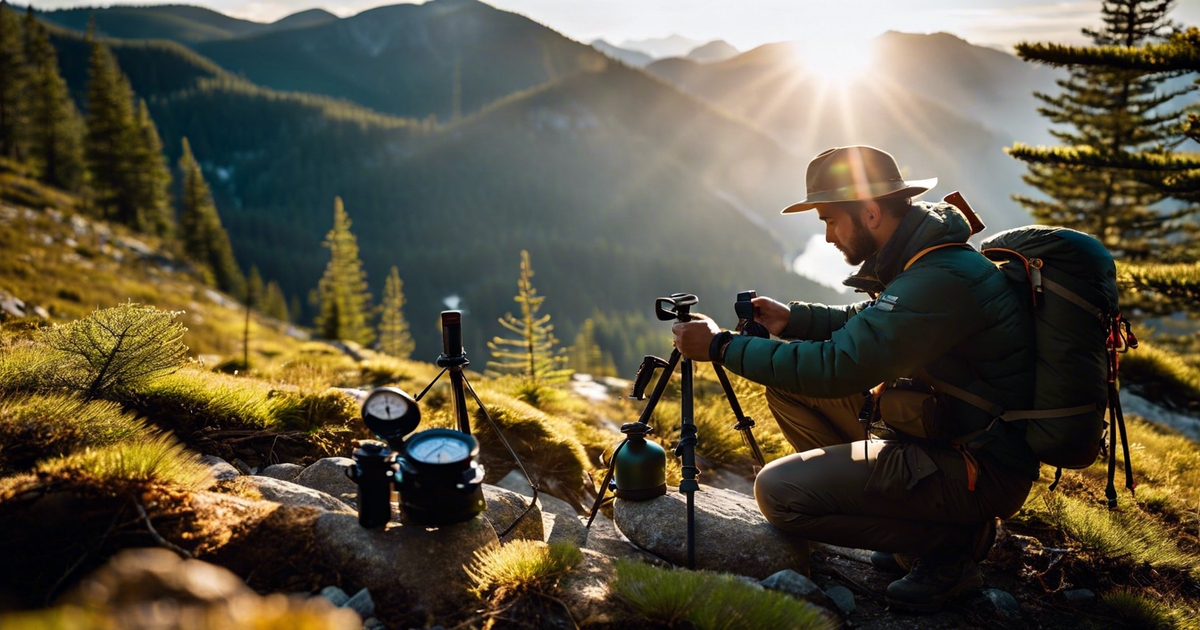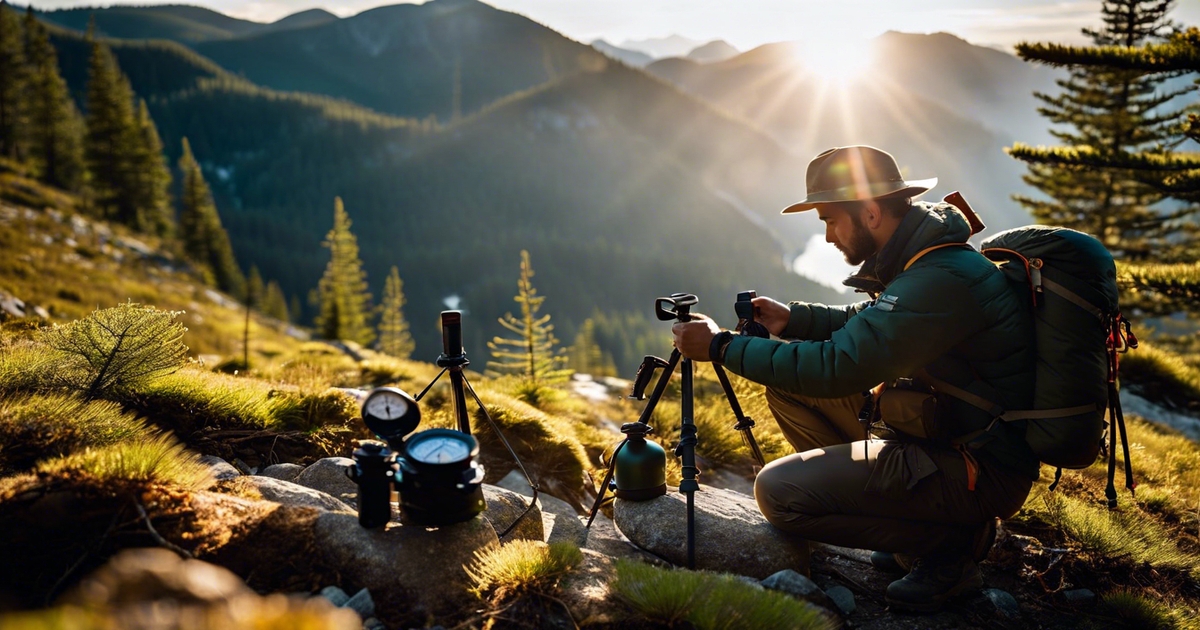Discover essential wilderness survival tips, including wildlife awareness, to prevent wildlife encounters and navigate the great outdoors with confidence during your hike. From building shelters to sourcing food, learn how to thrive in the wilderness with ease using practical survival skills and outdoor survival knowledge. Uncover the secrets of wilderness survival skills, staying safe and prepared in unpredictable environments. Whether you are a beginner or seasoned adventurer, these tips will equip you for any outdoor challenge. Embrace the contrast between modern comforts and raw nature as you master survival skills that could save your life.
Explore our comprehensive guide and elevate your wilderness survival game today. Equip yourself with practical knowledge, a wilderness survival guide, and strategies to master any outdoor expedition. Stay tuned for expert insights and valuable advice from a wilderness survival guide on surviving and thriving in the wild.
Key Takeaways
- Be Prepared: Always pack essential items like a first aid kit, water purification tablets, and a multi-tool before venturing into the wilderness.
- Prioritize Shelter: Learn shelter building techniques such as creating a debris shelter or using a tarp to protect yourself from the elements with a wilderness survival guide.
- Stay Hydrated: Know how to find and purify water from natural sources like streams or lakes to prevent dehydration.
- Master Fire Making: Practice making fire using various methods like friction fire or using a fire starter for warmth, cooking, and signaling for help.
- Learn Foraging: Understand which plants are safe to eat in the wild and how to identify potential food sources to sustain yourself in case of emergencies with a wilderness survival guide.
- Stay Calm and Positive: Maintain a positive mindset and focus on problem-solving to overcome challenges that may arise in the wilderness.
Preparing for the Wilderness
Research Environment
When preparing for the wilderness, research the environment thoroughly to understand potential hazards and challenges. Look into the terrain, weather patterns, wildlife, and any specific dangers of the area.
Explore online resources, books, and local experts to gather insights on the region you’ll be venturing into. Understanding the environment will help you pack the right gear and anticipate any difficulties you might face.
Create Detailed Itinerary
Develop a detailed itinerary outlining your journey and sharing it with a trusted contact who can raise an alarm if you don’t return as planned. Include checkpoints, estimated arrival times, and emergency contact information.
List down your planned route, campsites, and any alternate paths in case of unexpected circumstances. Having a well-thought-out itinerary enhances your safety and ensures that help can reach you if needed.
Pack Essential Survival Gear
Prioritize packing an essential survival kit tailored to your specific adventure. Include items like a map, compass, first aid supplies, water purification tablets, high-energy snacks, fire-starting tools, and a signaling device.
Ensure your gear is lightweight yet durable to withstand the demands of the wilderness. Tailoring your survival kit to the environment you’ll be in increases your chances of staying safe and managing unforeseen situations effectively.
Navigating the Wild
Mastering Navigation Skills
To survive in the wilderness, master map reading, compass, and GPS skills. These tools are crucial for accurate navigation in challenging terrains. Practice using them before embarking on any outdoor adventures.
Learn orienting techniques to find your way when faced with different survival situations. Understanding how to read maps and interpret compass directions can be a lifesaver during a survival journey. Familiarize yourself with topographic maps to navigate new trails effectively.
Leveraging Natural Landmarks
Utilize natural landmarks as guides while navigating through the wild. Look for distinctive features like mountains, rivers, or valleys to orient yourself. By recognizing these landmarks, you can stay on course and avoid getting lost in the wilderness.
Incorporate celestial navigation into your survival toolkit. In situations where traditional methods fail, knowing how to use the sun, moon, and stars for direction can be invaluable. Celestial navigation is a timeless technique that adventurers have used for centuries to navigate vast expanses of land.
Backup Navigation Methods
When facing unexpected challenges in the wild, having backup navigation methods is essential. In addition to modern tools like GPS devices, rely on natural cues for navigation. Pay attention to wind patterns, animal behavior, and vegetation changes as indicators of direction.
Create mental checkpoints along your survival journey to ensure you’re heading in the right direction. By combining various navigation techniques, you can adapt to different survival trips and confidently explore new outdoor terrains.
Shelter Building Techniques
Suitable Locations
When constructing shelters in the wilderness, choose suitable locations that offer natural protection. Look for areas with natural barriers like large rocks or trees to shield against harsh weather conditions.
Various Methods
Utilize various shelter-building techniques depending on the available resources. Construct a debris shelter using branches, leaves, and other natural materials for a quick and effective cover. Alternatively, opt for a lean-to shelter by propping a sturdy branch against a tree and covering it with foliage.
Roof Construction
For reliable shelter, focus on building a sturdy roof to protect against rain and wind. Use thick layers of leaves or branches to create a waterproof barrier. Ensure the roof has a steep slope to allow water runoff and prevent leakage.
Insulation Importance
Insulate shelters properly to retain body heat and stay warm during cold nights. Layer insulation materials such as dry leaves, grass, or pine needles inside the shelter to create a thick barrier against the cold ground. This helps in maintaining body temperature and prevents hypothermia.
Natural Materials
When building shelters, make use of natural materials found in the surrounding environment. Incorporate branches, leaves, mud, and rocks into the structure for stability and durability. These materials blend seamlessly with nature, making the shelter less conspicuous to wildlife.
Finding and Purifying Water
Locating Water Sources
When stranded in the wilderness, locating water sources is crucial for survival. Look for signs like lush vegetation, animal tracks converging, or low-lying areas where water may collect after rain.
Purifying Water
To ensure the water you find is safe to drink, purify water through various methods. Boiling is a simple and effective way to kill harmful bacteria and parasites. Alternatively, use portable filters or chemical treatments to make water safe for consumption.
Ensuring Safe Consumption
Even if a water source appears clean, it can still contain harmful pathogens. Ensure water is purified before drinking to avoid falling ill from contaminants that are invisible to the naked eye.
Essentials of Making Fire
Gather Materials
To start a fire, gather appropriate fire-starting materials like dry leaves, twigs, and bark. Look for items that catch fire easily.
Understand Techniques
Learn about different fire-starting techniques such as using a lighter, matches, or a fire starter kit. Practice these methods beforehand.
Utilize Fire
Once the fire is lit, use it for warmth, cooking food, and signaling for help if needed.
Gathering appropriate fire-starting materials is crucial for starting a fire successfully in the wilderness. Dry leaves, twigs, and bark are excellent choices as they ignite quickly. Ensure these materials are readily available before attempting to start a fire.
Understanding different fire-starting techniques is essential for survival. Whether using a lighter, matches, or a fire starter kit, familiarity with these tools can make all the difference in emergency situations. Practice these techniques in various conditions to be prepared.
Utilize the fire not just for warmth but also for cooking food. Cooking over an open flame can provide essential nutrients and boost morale in survival scenarios. Fire can be used for signaling, creating smoke signals during the day or flames at night to attract attention.
- Pros:
- Provides warmth and comfort
- Essential for cooking food
- Can be used for signaling rescuers
- Cons:
- Requires proper handling to prevent accidents
- May attract unwanted attention if not careful
Securing Food and Foraging
Edible Plants
Identifying edible plants is crucial for wilderness survival. Look for familiar options like dandelions, cattails, and berries. Avoid unfamiliar foods to prevent poisoning.
Learning about foraging opportunities in your surroundings can provide a sustainable food source. Study local plant life and practice identifying edible plants beforehand.
Hunting Techniques
Basic hunting techniques are essential when securing food in the wilderness. Construct simple traps using available materials like sticks and rocks. Patience is key when waiting for prey.
Utilize basic tools such as slingshots or spears for hunting small game. Understanding animal behavior and tracking patterns can increase success in hunting.
Food Safety
When in doubt, exercise caution with food consumption. Always test a small portion of an unknown plant before eating a larger quantity. Boiling or cooking wild plants can reduce toxins.
Create a list of edible plants found in the region to refer to during foraging trips. Prioritize known sources of food safety to avoid unnecessary risks.
First Aid and Medical Skills
First Aid Kit
Carry a well-equipped first aid kit to handle medical emergencies in the wilderness. Include essentials like bandages, antiseptic wipes, pain relievers, and tweezers.
Ensure your first aid kit is lightweight and compact for easy portability during outdoor adventures. Remember to check and restock it regularly to maintain its effectiveness.
Basic First Aid Techniques
Learn basic first aid techniques to treat common injuries such as cuts, burns, sprains, and insect bites. Knowing how to clean and dress wounds properly can prevent infections.
Mastering CPR and the Heimlich maneuver can be life-saving skills in emergency situations. Practice these techniques regularly to ensure you can perform them confidently when needed.
Handling Emergencies
Be prepared to handle emergencies in the wilderness by staying calm and assessing the situation carefully. Prioritize treating life-threatening conditions like severe bleeding or difficulty breathing.
Develop your survival skills by taking first aid courses or wilderness medicine training. These programs can enhance your ability to respond effectively to medical emergencies in remote locations.
Understanding Wildlife and Safety
Wildlife Awareness
Recognize common wildlife species and their behaviors to prevent wildlife encounters. Understanding the local wildlife is crucial for ensuring safety in the wilderness.
Preventing Wildlife Encounters
Practice wildlife safety measures such as making noise while hiking to alert animals of your presence. Carry bear spray in bear country for added protection.
Safe Food Storage
Secure food properly to prevent attracting wildlife. Hang food in a tree away from your campsite or use bear-proof containers. Avoid storing food in tents.
By understanding the behaviors of animals in the wilderness, you can significantly reduce the risks of encountering dangerous situations. It is essential to be aware of the potential hazards posed by different wildlife species and take necessary precautions to ensure your safety.
Wildlife encounters can be unpredictable, but being knowledgeable about local wildlife and their habits can help you stay safe. Always be cautious and respectful of wildlife when exploring the great outdoors. Remember, prevention is key when it comes to avoiding conflicts with animals.
Signaling for Help
Visual Cues
Knowing how to signal for help using visual cues is crucial in wilderness survival situations. Creating visible signals in open areas can significantly increase your chances of being spotted by rescue teams. Use bright colors or reflective materials to attract attention.
Carry signaling devices like whistles or mirrors to alert rescuers of your location. A whistle’s sharp sound can travel long distances, making it an effective tool for calling for assistance. Mirrors are useful for reflecting sunlight towards search teams.
Auditory Signals
In addition to visual cues, auditory signals can also aid in attracting help. Yelling loudly and consistently can help rescuers pinpoint your location. However, conserve your energy and avoid shouting excessively to prevent exhaustion.
When signaling for help, ensure you are in an open area with maximum visibility. Avoid dense vegetation or areas with obstacles that may obstruct the view of rescue teams. Utilize available resources in your surroundings to create clear and easily recognizable signals.
Communication Methods
Understanding different communication methods for signaling distress is essential for wilderness survival. Apart from whistles and mirrors, you can use smoke signals, bright clothing, or even building large symbols on the ground to indicate your need for rescue.
Remember that timing is crucial when signaling for help. During daylight hours, focus on creating visible signals that stand out against the natural environment. At night, use flashlights or fires to attract attention.
Backup Options
Always have backup options for signaling in case your primary method fails. Carry multiple signaling devices in your survival kit to ensure you have alternatives available. Practice using these tools beforehand to familiarize yourself with their operation.
In a distress situation, maintain a calm demeanor and think strategically about the most effective way to signal for help. Stay alert for any passing aircraft or boats that could assist in your rescue efforts.
Keeping a Positive Mindset
Stay Calm
Maintaining a positive mindset is crucial in wilderness survival situations. Stay calm to think clearly and make rational decisions. Panicking can lead to poor choices that may jeopardize your safety.
Practice Mindfulness
Practice mindfulness by focusing on the present moment. Pay attention to your surroundings, sounds, and sensations. This helps you stay grounded and reduces stress levels, promoting mental clarity.
Positive Self-Talk
Engage in positive self-talk to boost your confidence and resilience. Encourage yourself with affirmations like “I can do this” or “I am strong.” This optimistic approach can uplift your spirits during challenging times.
Nature Inspiration
Draw inspiration from nature to uplift your spirits. The wilderness offers serene landscapes and peaceful moments that can rejuvenate your mental resilience. Take a moment to appreciate the beauty around you for a mental boost.
Benefits of a Positive Mindset
- Enhances decision-making abilities
- Boosts morale and motivation
- Improves overall mental well-being
Final Remarks
By now, you’ve learned essential wilderness survival tips from preparing for the unknown to navigating, finding resources, and staying safe. Remember, being equipped with knowledge and skills is your best asset in unpredictable situations. Stay proactive, keep a positive mindset, and trust your abilities to adapt. Always prioritize safety and well-being above all else. Your preparedness can make all the difference in challenging circumstances.
Now, take these insights and put them into practice. Get outdoors, test your skills, and continue learning about wilderness survival. Share this knowledge with others and encourage them to be prepared as well. Remember, the more you practice and refine your survival skills, the more confident and capable you become in facing whatever nature throws your way.
Frequently Asked Questions
What are the essential wilderness survival tips every outdoor enthusiast should know?
To survive in the wilderness, it’s crucial to focus on preparing for the environment, learning navigation skills, building adequate shelter, finding and purifying water sources, mastering fire-making techniques, securing food through foraging, acquiring basic first aid knowledge, understanding wildlife behavior for safety, signaling for help when needed, and maintaining a positive mindset throughout the ordeal.
How can I effectively navigate in the wild without getting lost?
Navigating the wilderness requires using a combination of tools like maps, compasses, GPS devices, and natural landmarks. It’s important to familiarize yourself with basic orienteering skills and always have a backup plan in case technology fails. Stay aware of your surroundings and learn how to read topographical features for successful navigation.
What are the best techniques for building a shelter in the wilderness?
When constructing a shelter in the wilderness, consider using natural materials like branches, leaves, and rocks to create a sturdy structure that provides protection from the elements. Choose a suitable location away from hazards such as falling debris or flooding. Prioritize insulation and waterproofing to stay warm and dry throughout the night.
How can I find and purify water sources in the wilderness to ensure safe consumption?
To locate water sources in the wilderness, look for signs such as animal tracks or vegetation that indicate proximity to water. Always filter or boil collected water to remove impurities and pathogens before drinking. Carry portable water filtration devices or purification tablets for emergencies.
What are some effective ways to secure food through foraging in a survival situation?
In a survival scenario, you can procure food by foraging for edible plants, fruits, nuts, and insects. Learn to identify safe-to-eat vegetation and avoid toxic species. Utilize basic trapping techniques or fishing methods if resources permit. Prioritize energy-rich foods to sustain your body’s needs during prolonged survival situations.





